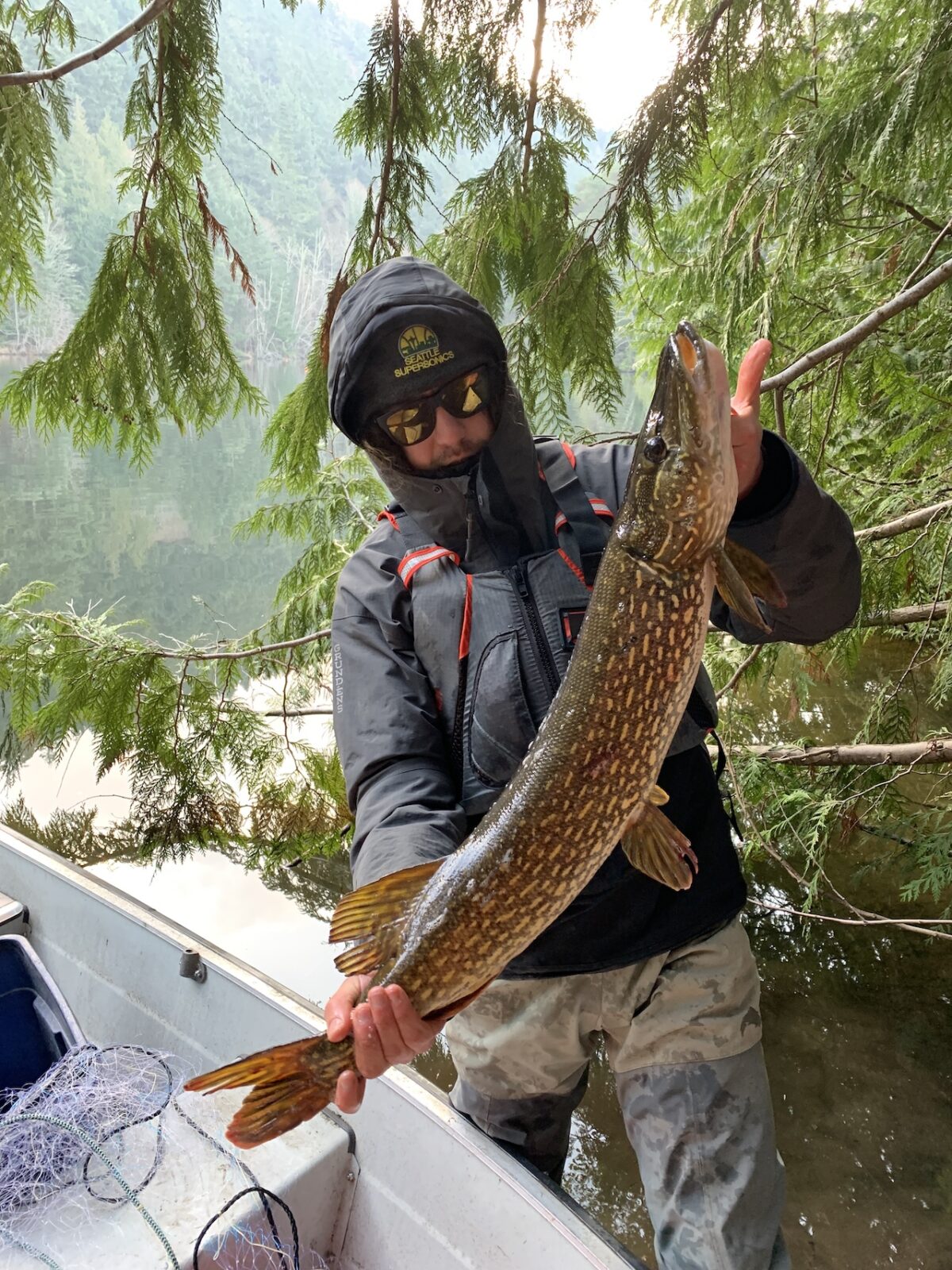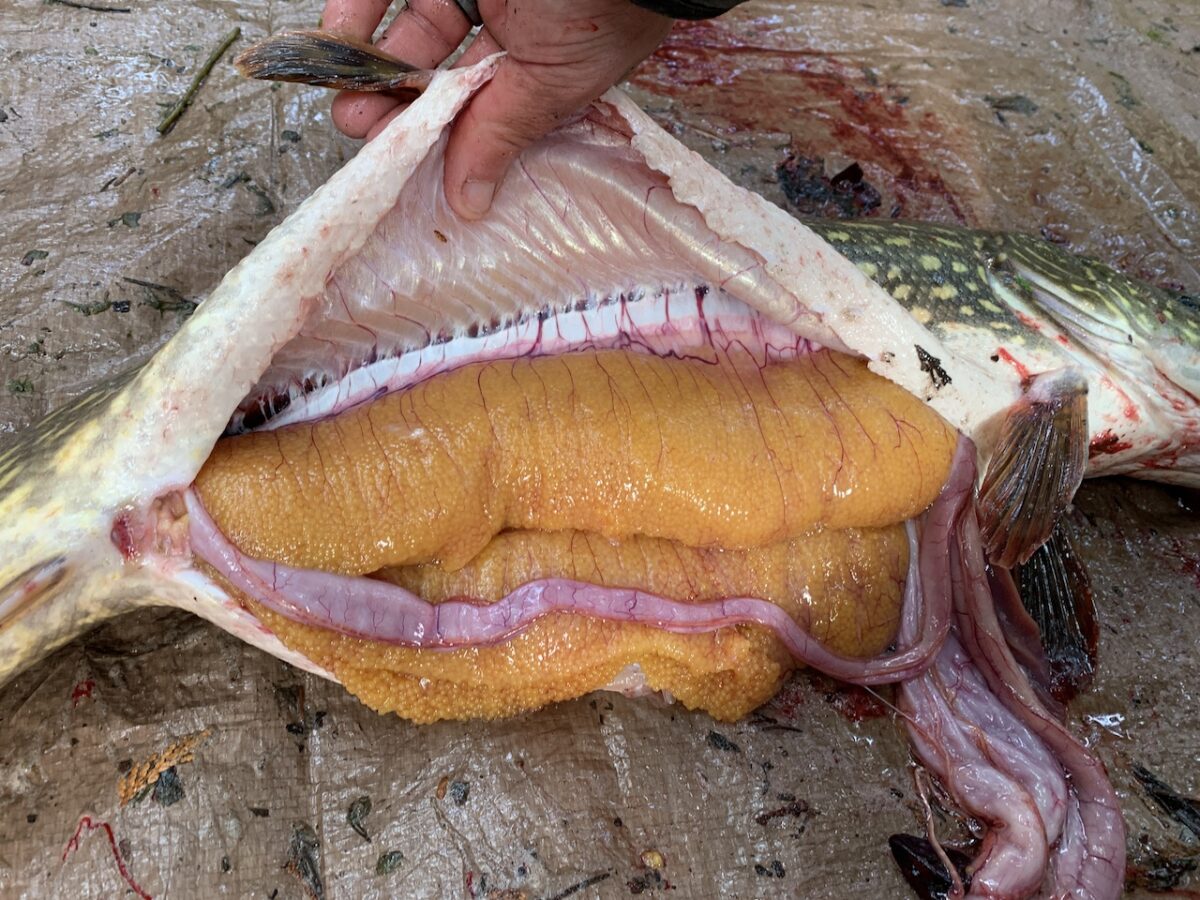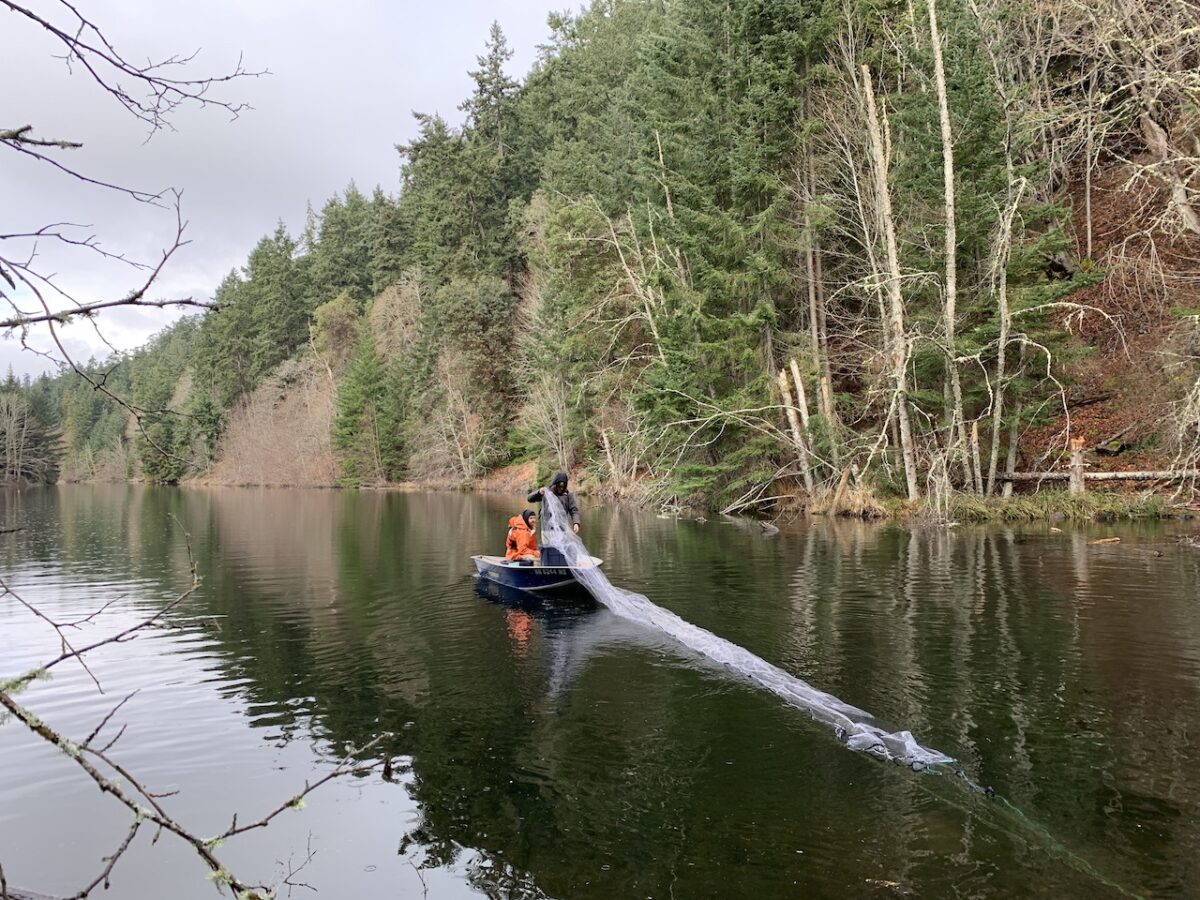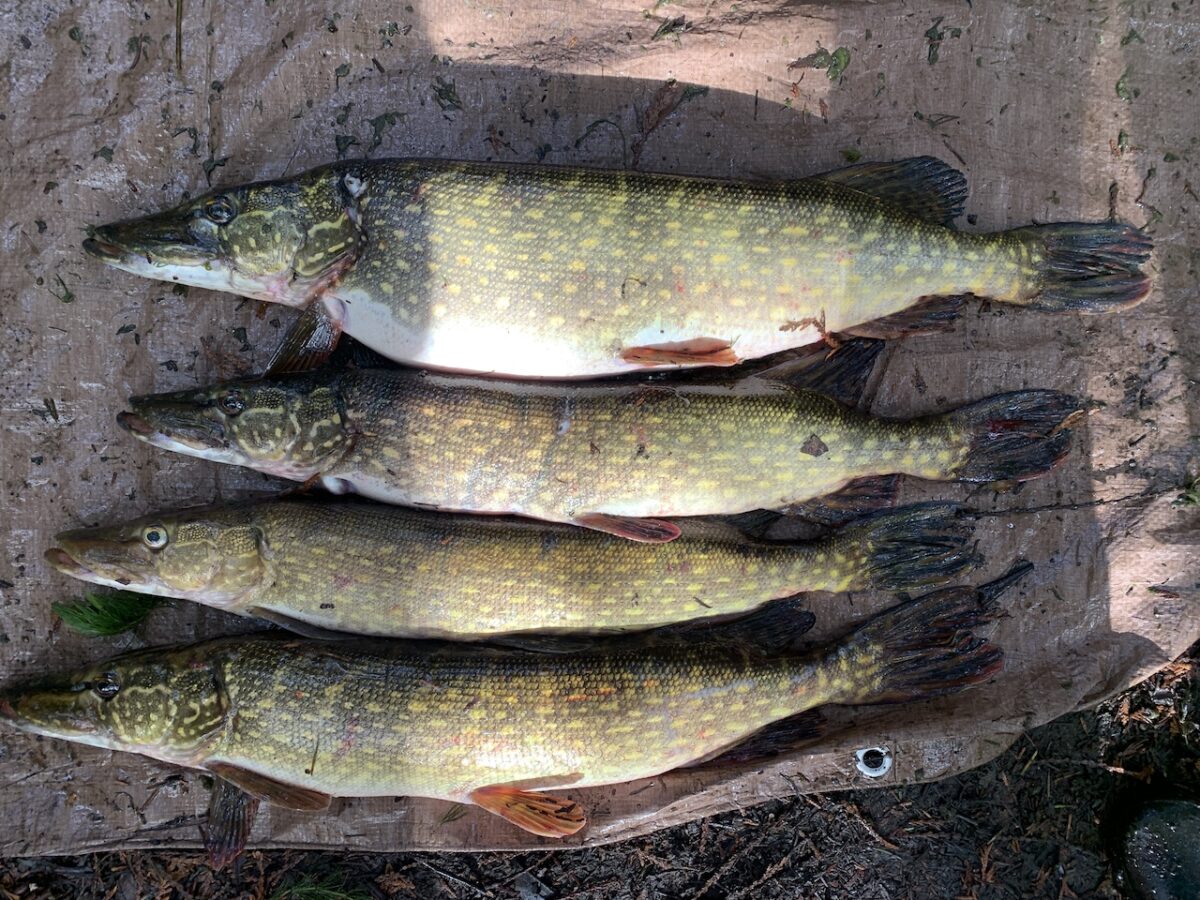
More Northern Pike Found In San Juan Island Lake
WDFW crews this week netted four northern pike out of the San Juan Island lake where an angler caught one last month.

“Fish Program and Aquatic Invasive Species unit crews are still on the island through today working to deploy up to six gillnets at a time, acquire environmental DNA (eDNA) samples from the area, and to assess how much the pond and wetland connects to other waterbodies and how widespread the risk of spread is,” said Chase Gunnell, an agency spokesman, today. “They’re also taking otoliths from the captured pike to assess age and population structure, and stomach samples to look for predation on coastal cutthroat trout and other native species.”
Pike represent a direct threat to trout, kokanee, juvenile Chinook, coho, steelhead and other Northwest natives, and one of the four pike WDFW captured on San Juan Island’s Carefree Lake was a gravid hen bursting with eggs.

The infestation at the pond, which is located on the San Juan County Conservation Land Bank’s property Limekiln Preserve along Westside Road, came to light in late February when local teenage fisherman Evan Hiatt caught a pike and showed pictures of it to his parents. They forwarded the images to WDFW biologist Beth Tate, who passed them to fellow agency staffers and the land bank.
Northern pike are native to the upper Midwest, Canada and interior Alaska, but a**hat bucket biologists have moved them over the Continental Divide and they’re now in the Pend Oreille River and Lake Roosevelt. Apparently, they can even use estuaries to move between watersheds.
Concerted WDFW and tribal efforts have been successful at gillnetting thousands of pike in Northeast Washington over recent years, but the further spread of one of the West’s least wanted invasive species is all but inevitable.
To minimize that and the impact on native fish, WDFW released a draft interagency rapid response plan for public review this week.

“Preventative work done now will help to minimize the environmental, economic, and cultural resource impacts of northern pike later,” said Chris Donley, WDFW Region 1 Fish Program manager in Spokane said in a press release.
The response plan states that the areas at highest risk of being invaded by pike are the Columbia River below Grand Coulee and Chief Joseph Dams, where the so-called anadromous zone occupied by seagoing salmon and steelhead begins, as well as Lake Washington, where several pike have been netted since 2017 by tribal crews.
The plan does say that WDFW has successfully eradicated pike illegally introduced to Jefferson County’s Crocker Lake, Pend Oreille County’s Upper and Lower Lead King Lakes and Spokane County’s Fish Lake.
Back on San Juan Island’s Carefree Pond, removal efforts may also occur in early April and early May, depending on staff time and local lodging, WDFW’s Gunnell said.


